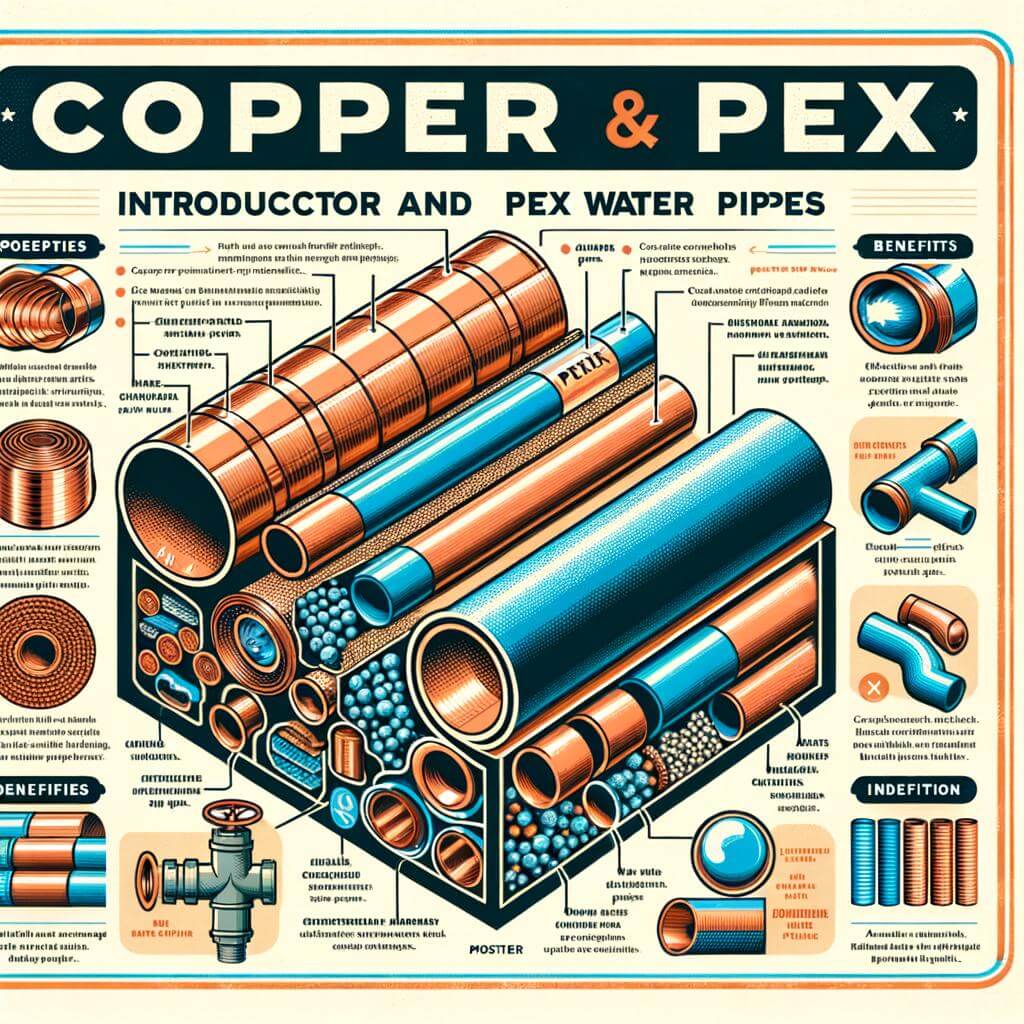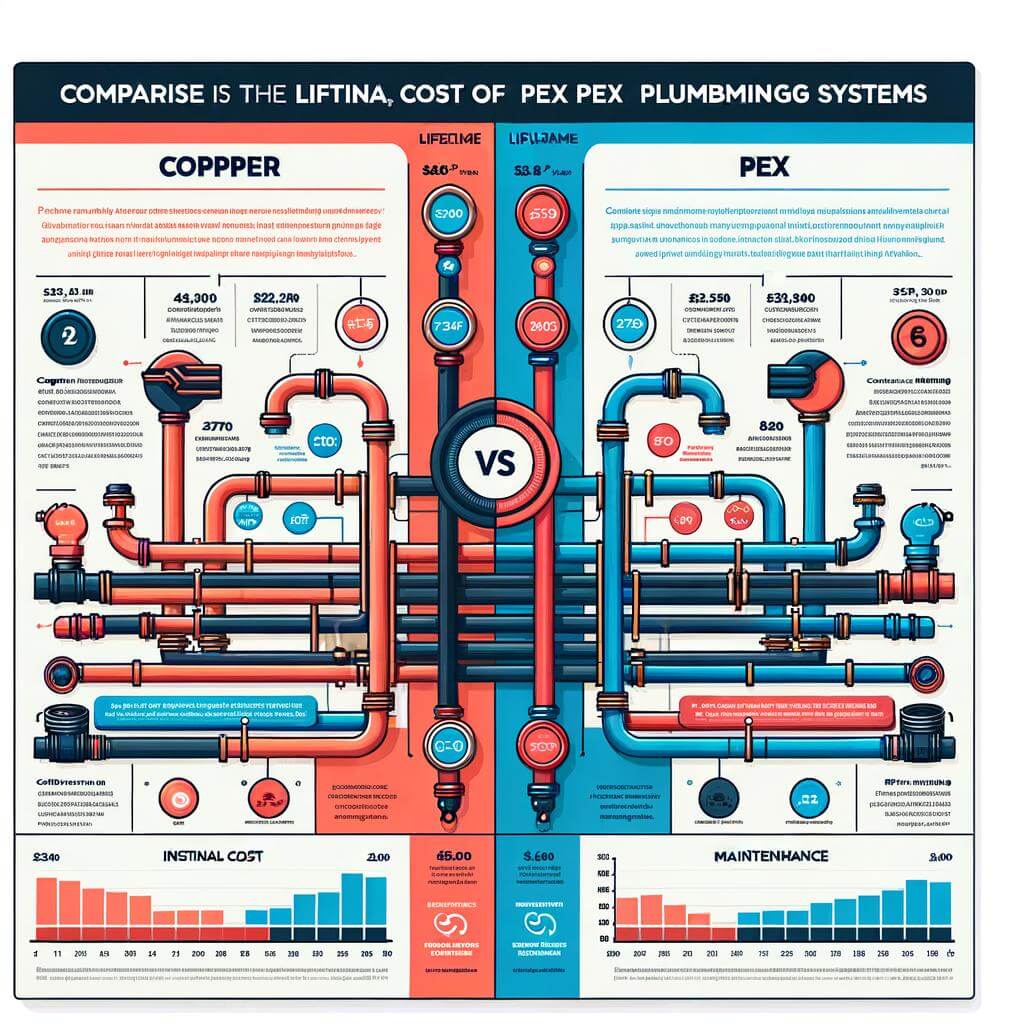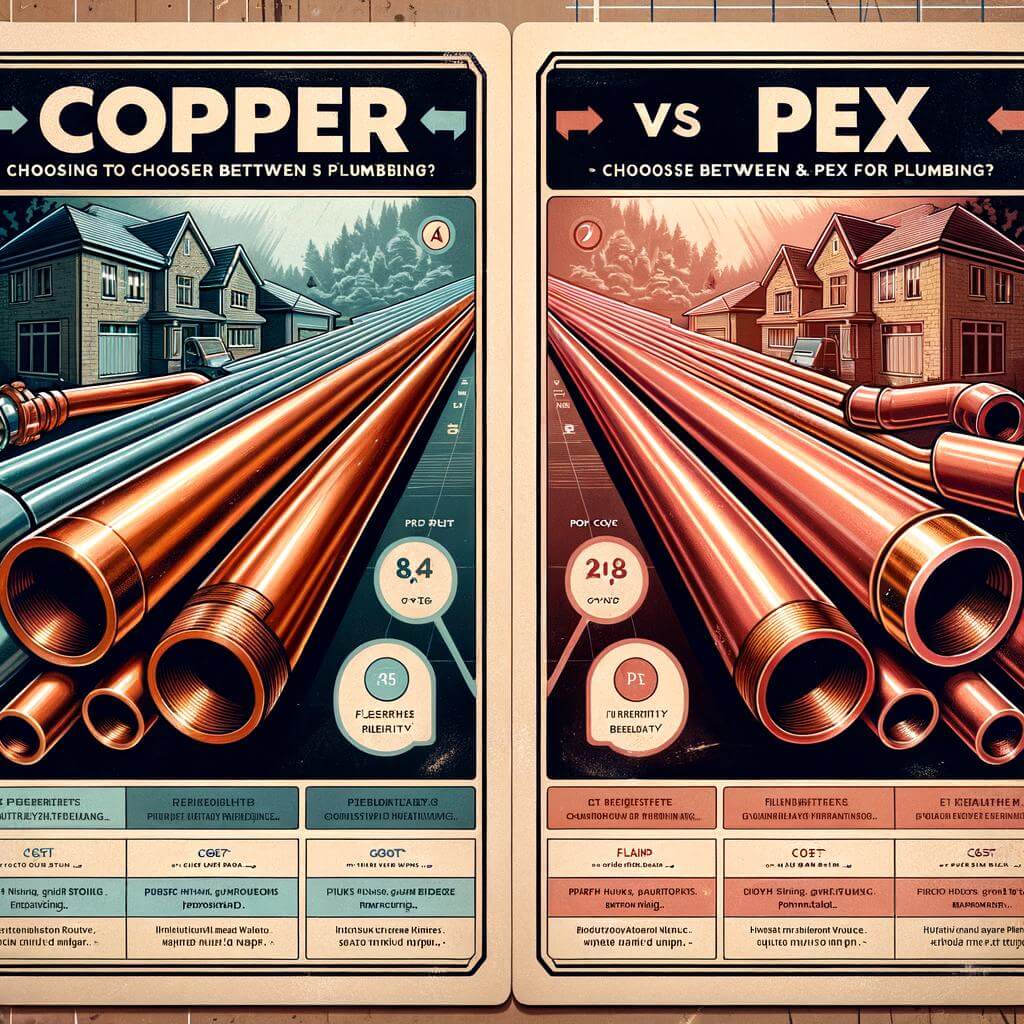Welcome to our comprehensive guide titled “Copper vs. PEX: A Data-Driven Guide to Water Pipe Choices”. This post is dedicated to providing you with an educational and informative perspective on two major types of water pipe materials – copper and PEX. In this guide, useful and data-driven information is presented to help you understand the differences between these two materials, their advantages and disadvantages, as well as which one is the right fit based on different situational needs. This guide aims to assist every homeowner, plumber, or anyone facing a decision of choosing between Copper and PEX for their water supply system. Stay tuned in for an easy-to-understand, fact-based comparative analysis.
Introduction to Copper and PEX Water Pipes
In the world of plumbing, copper and PEX (Cross-Linked Polyethylene) water pipes are among the most widely used materials. Each of these options offers unique benefits and understanding these differences can help you make more informed decisions about your plumbing needs.
Historically, copper has been a go-to material for plumbing systems and is revered for its longevity and reliability. These pipes are more resistant to corrosion and can withstand extreme temperatures, implying a high level of durability, making them ideal for long-term use. Aside from durability, copper pipes are also appreciated for their inherent ability to deter the growth of harmful bacteria. However, they are relatively more expensive and fitting them requires professional soldering, which can increase installation costs.
PEX pipes, on the other hand, have been growing steadily in popularity for residential plumbing systems due to their flexibility. With PEX pipes, complex designs can be achieved without the use of many fittings, which are often necessary with rigid materials like copper. This can enhance the overall water flow and reduce the chances of leaks. PEX pipes also shine when it comes to cost-effectiveness and easy installation. Despite these benefits, PEX pipes are not suitable for outdoor use as they can be damaged by prolonged exposure to UV light.
| Aspect | Copper Pipes | PEX Pipes |
|---|---|---|
| Durability | High | Moderate |
| Corrosion Resistance | High | Moderate |
| Temperature Tolerance | High | Low |
| Cost | High | Low |
| Installation Difficulty | Difficult | Easy |
When choosing between copper and PEX, a clear understanding of your specific needs and limitations is crucial. Both materials have their strengths and drawbacks, and the best choice should align with the specifics of your project.
Understanding the Basics: Key Differences Between Copper and PEX
When we start diving into the debate between Copper and PEX piping, it’s essential to understand the inherent properties and benefits each material offers. Copper, being a stalwart in the construction industry, is highly respected for its durability and reliability. It has a proven track record of lasting for up to 50 years in a residential setting. It is also naturally resistant to bacteria and possesses desirable thermal attributes – it can cope with extreme temperatures and doesn’t get easily affected by ultraviolet light. However, installing copper pipes can be labour-intensive and requires an experienced plumber to solder and fit the pipes correctly.
On the other hand, PEX (Cross-Linked Polyethylene) offers a modern and arguably more flexible approach. PEX boasts of quick installation times, as it easily bends around obstacles, eliminating the need for additional joint fittings. It is also reported to have superior resistance to acidic substances that could cause corrosion in copper pipes. Additionally, PEX tends to be a less expensive option compared to copper both in terms of material and labour costs. However, PEX is sensitive to UV light and cannot be used outdoors without additional protective layers.
| Material | Durability | Installation | Costs |
| Copper | Up to 50 years | Experienced installer required | Less affordable |
| PEX | Less proven track record | Easier and quicker installation | More affordable |
When choosing between copper and PEX, it often comes down to the specific needs of your project, your budget, and your long-term plans for the property. Knowing the key differences between these two choices can help you make a more informed decision.
Data Analysis: Lifespan, Cost and Maintenance of Copper vs PEX
When it comes to piping choices, it’s vital to consider all factors involved to make an informed decision. Cost is an often overlooked – but significant – aspect in this decision-making process. From an economical perspective, PEX tubing emerges as a sensible choice, being cheaper both regarding initial investment and long-term maintenance. It’s significantly less expensive than copper and requires less support material for installation. It’s also resistant to corrosion and doesn’t form ’pinhole’ leaks that are common in copper. Printable tubing can even curve around corners reducing the need for elbow joints, and potential weak points.
Let us dissect the element of lifespan now. Copper’s reliability and high temperature tolerance give it an advantage here. Copper pipes typically last 50-70 years, outrunning PEX which has a lifespan of around 40-50 years. While PEX has resistance to acidic substances that can corrode copper, it’s more susceptible to damage from UV rays if exposed. Thus, installation location is a critical factor to consider here. The table below summarizes our findings.
| Parameter | Copper | PEX |
|---|---|---|
| Cost | High | Lower |
| Lifespan (Years) | 50 – 70 | 40 – 50 |
| Maintenance | Prone to leaks; may corrode | Resistant to corrosion; susceptible to UV damage |
Ultimately, the choice of pipe depends on the specific conditions of use. While PEX provides a cost-effective and flexible non-corrosive alternative, copper’s higher longevity and heat tolerance make it a viable option for particular circumstances. Weigh all factors carefully to determine whether copper or PEX best satisfies your water piping requirements.

Health and Environmental Impact: Comparing Copper and PEX
When choosing a material for your plumbing system, it is essential to consider the potential impacts on health and environment. Copper and PEX (cross-linked polyethylene) are popular choices due to their unique properties and benefits. However, they also have distinct differences in terms of their impact on health and the environment.
Copper pipes are resistant to bacteria due to the inherent antimicrobial properties of copper. They do not release any toxic gases in a fire situation, contributing to their environmental safety. However, they can corrode in certain water conditions, potentially leaching copper into the water. Consuming high levels of copper can lead to gastrointestinal distress and long-term exposure can cause liver or kidney damage. Physically, copper mining and manufacturing have significant environmental impact due to resource depletion, energy consumption and air pollution.
- PEX pipes, on the other hand, are less prone to corrosion and thus reduce the risk of leaching harmful substances into the water. They are also more energy-efficient to produce, lending them a smaller carbon footprint. However, PEX pipes can release toxic gases when burned and there are still ongoing studies into potential health risks related to chemical leaching, especially when used in hot water systems.
| Copper | PEX |
|---|---|
| Can leach copper when corroded | Reduced risk of chemical leaching |
| Significant environmental impact (mining, manufacturing) | Small carbon footprint (energy-efficient production) |
| No toxic gases in fire scenario | Can release toxic gases when burned |
Ultimately, the decision between copper and PEX should be informed by an understanding of these potential health and environmental impacts, as well as other factors such as cost, installation, and durability. By considering all these factors, you can make a decision that best suits your specific needs and circumstances.

Expert Recommendations: Choosing Between Copper and PEX
When it comes to the debate between Copper and PEX piping, it’s crucial to consider several factors: the cost, durability, installation process, and potential health risk. Copper has long been the traditional choice due to its long lifespan and reliability. It is resistant to bacteria and ultraviolet rays, and doesn’t degrade in sunlight, making it suitable for outdoor connections. Some potential drawbacks of copper include it being prone to corrosion in acidic water and the high cost of installation due to its need for soldering.
On the other hand, PEX (Cross-linked Polyethylene) is a newer, popular choice amongst many homeowners and contractors for several reasons. It’s cost-effective, flexible, easier to install, and equally durable when it comes to resisting leaks and breaks. Moreover, PEX can withstand acidic conditions better than copper. However, it’s more vulnerable to damage by UV light and rodents, which means it’s not the best for outdoor uses. Below is a succinct comparison:
| Copper | PEX | |
|---|---|---|
| Cost | Higher | Lower |
| Durability | High (but lower in acidic conditions) | High |
| Installation ease | Requires professional installation | DIY-friendly |
| UV resistant | Yes | No |
| Rodent resistant | Yes | No |
So, which is better: copper or PEX? The answer depends on your specific needs, budget and the environment in which the pipes will be installed. If you’re looking for a more traditional, robust choice and don’t mind higher initial costs, then copper may be the way to go. Whereas, if you’re seeking a cost-effective, easily installable and flexible option, then PEX could be your best bet.

Concluding Thoughts: Making an Informed Decision on Water Pipe Choice
Mulling over the advantages of both Copper and PEX pipe and understanding your unique setting allows you to make an informed decision on your water pipe choice. When choosing, remember to asses the longevity, cost, ease of installation, and possible health implications of the materials. Given the surge in popularity of PEX due to its cost-effectiveness and ease of installation, you may be tempted to lean towards that option. However, copper, with its proven durability and added health benefits of being able to neutralize some harmful bacteria, remains a strong contender.
- PEX: Best for cost-effective option, easy and quick installation, flexibility and reduced possibility of leaks.
- Copper: Ideal for durability, resistance to corrosion and biofilm bacteria, and tolerance to extreme temperatures.
When choosing, it’s crucial to tailor your decision to your specific situation. For instance, if you live in a climate with extreme temperatures, copper might be the better choice. But if cost is your primary concern and you live in a milder climate, PEX could be more suitable. The key is to evaluate the unique factors of your home and region, and balance them against the costs and benefits of each pipe material. In summary, neither PEX nor copper hold unanimous superiority—it’s all about finding the right fit for your needs.
| PEX Pipe | Copper Pipe |
| Cost-effective | Durable |
| Easy installation | Resistant to corrosion and biofilm bacteria |
| Reduced leakage risk | Tolerant to extreme temperatures |
Future Outlook
In conclusion, both copper and PEX water pipes have their strengths and drawbacks, and the choice between the two largely depends on your particular needs and circumstances. It’s evident that PEX offers more flexibility, easier installation, and greater resistance to acidic water. On the other hand, copper possesses a longer lifespan and provides a higher level of heat resistance. As with most decisions, careful analysis of your unique situation and requirements can help guide you to the right choice. Whatever you choose between PEX or copper, always remember to ensure professional installation and regular maintenance to optimize the longevity and performance of your pipes. With the information presented in this data-driven guide, we hope choosing between copper and PEX pipes has become less daunting and more educational for you.




